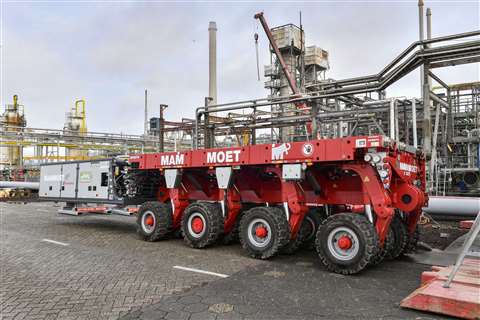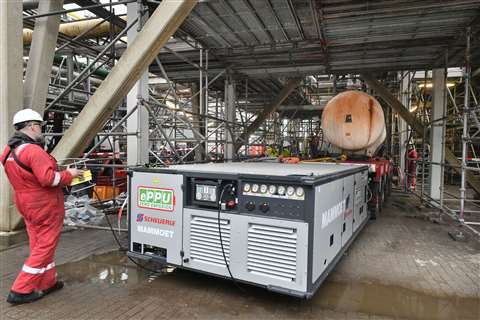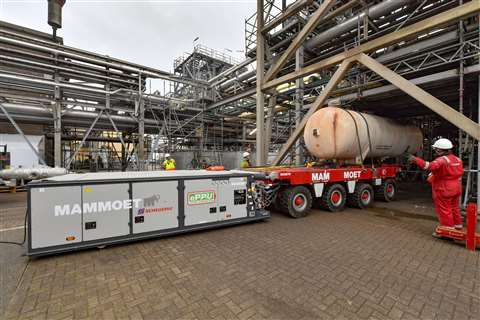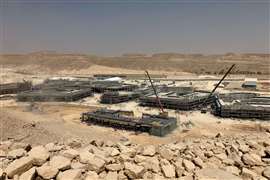First electrically powered SPMT at work
29 April 2022
 Mammoet said the electric move marks a major milestone in the development of sustainable heavy lifting and transport
Mammoet said the electric move marks a major milestone in the development of sustainable heavy lifting and transport
International heavy lift and transport specialist Mammoet has completed what it said was a world-first electric heavy transport project.
Using an electric power pack unit (PPU) on a Scheuerle self propelled modular transporter (SPMT), Mammoet replaced a production vessel at a Dutch chemical plant. Client Shell wanted a solution with the lowest environmental impact and Mammoet has a strong focus on sustainability.
Historically, for such heavy loads, the amount of power required has been a barrier to the use of electricity in an SPMT application. Working with Scheuerle and “thanks to extensive research and testing this has now become a reality,” Mammoet said.
The electric PPU was used with a four axle line module of Scheuerle SPMT. It had to work in a confined space with only a few metres to move the old vessel out and get the new one in, Mammoet explained.
Space was so restricted when extracting the old vessel that it had to be secured to the SPMT only above the first two axles, using the weight of the electric PPU at the end as counter weight. With the old vessel moved out it was removed from the SPMT by a crane which then lifted the replacement in on to the SPMT for installation.
 The old vessel prior to removal from its very confined location where diesel fumes would have been an issue
The old vessel prior to removal from its very confined location where diesel fumes would have been an issue
Electric benefits
Ludo Mous, Mammoet Europe operations director explained the benefits of the electric PPU, “The ePPU is a really important step in how we support our customers with decarbonising projects. But in this case, the benefits were not limited only to a lower carbon footprint. With work taking place in a highly confined area, we would have been highly conscious of the emissions generated by a typical diesel PPU and would need to carefully manage operatives’ exposure. By using an electric model, we removed this issue completely, while also creating a much quieter working environment.”
Mammoet said the technology is now proven and ready for further application on a broader range of work around the world.
“We were extremely pleased that the ePPU performed as we expected, delivering a low-carbon solution for our customer. We expect demand for it to be high, in particular for projects that are looking for more sustainable options or where exhaust emissions must be kept to a minimum for safety reasons, such as civil projects taking place within tunnels or work inside nuclear facilities,” Mous concluded.
Details of the electric SPMT will be provided on internationalcranes.media and in International Cranes and Specialized Transport magazine as soon as we get hold of them.
 Emerging with the old vessel hanging off the back of the SPMT using the weight of the electric PPU as a counterbalance
Emerging with the old vessel hanging off the back of the SPMT using the weight of the electric PPU as a counterbalance
STAY CONNECTED


Receive the information you need when you need it through our world-leading magazines, newsletters and daily briefings.
CONNECT WITH THE TEAM











